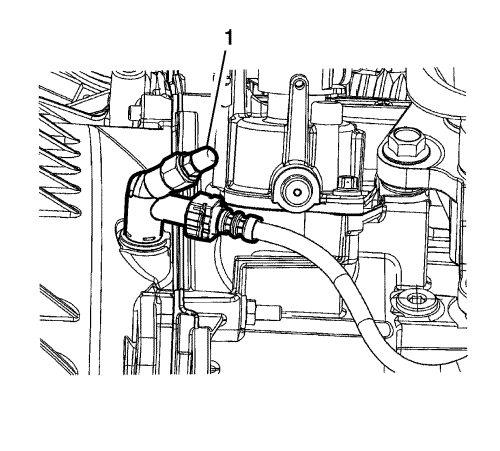Hydraulic Clutch System Bleeding
Warning: Refer to Brake Fluid Irritant Warning in the Preface section.
Caution: Brake fluid must not come in contact with mineral oils and greases. The smallest amount of such could lead to malfunction or breakdown of the clutch.
Caution: Refer to Brake Fluid Effects on Paint and Electrical Components Caution in the Preface section.
Note: The hydraulic clutch actuation must only be bled from "below", i.e. from the bleeder valve.

Note: The following operational stages must be undertaken to fill the pressure line between the master cylinder and the clutch actuator cylinder. When bleeding, ensure that the clutch fluid reservoir is always full and does not run dry.
- Bleed pressure line between the clutch master cylinder and the clutch actuator cylinder using the following procedure:
| 1.1. | Remove the valve cap (3) from the bleeder valve. |
| 1.2. | Fill brake fluid reservoir up to "MAX" marking. |
| 1.3. | Press and hold clutch pedal. |
| 1.4. | Open bleeder valve until air or air/brake fluid mixture emerges. |
| | Note: Do not close the bleeder valve too fast. |
| 1.5. | Close the bleeder valve. |
| 1.6. | Release the clutch pedal slowly. |
| 1.7. | Wait approximately 5 seconds. |
| 1.8. | Repeat this bleeding process 4 times. |
| 1.9. | Tighten bleeder valve. |
| 1.10. | Push valve cap on to bleeder valve to protect the bleeder valve. |
- Check shifting for ease of movement with vehicle stationary, with engine running and with clutch disengaged.
- Road test the vehicle to ensure proper operation.
Undertake road test using varying RPM ranges and frequent gear changes, bring vehicle to operating temperature during this process. Ensure the brake and clutch system is operating correctly.
| © Copyright Chevrolet. All rights reserved |
